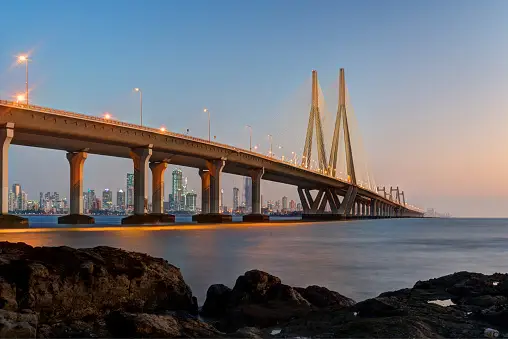2. Medieval India.
Medieval India refers to the period of Indian history that spans from roughly the 6th century CE to the 18th century CE. This era was characterized by significant political, social, and cultural developments, including the rise and fall of various dynasties, the spread of Islam, and the fusion of Indian and Islamic cultures. Here are some key aspects of medieval India:

Early Medieval Period (c. 6th-12th century CE):
In North India, the Gurjara-Pratiharas, Palas, and Rashtrakutas held power.
This period saw the decline of the Gupta Empire and the rise of regional kingdoms.
The Rashtrakuta, Chola, and Chalukya dynasties were prominent in South India.
Islamic Invasions and the Delhi Sultanate (c. 12th-16th century CE):
The 12th century witnessed the arrival of Islamic rulers in India through invasions by Mahmud of Ghazni and Muhammad Ghori.
The establishment of the Delhi Sultanate in the early 13th century marked the beginning of Muslim rule in India.
Various dynasties, including the Slave Dynasty, the Khalji Dynasty, the Tughlaq Dynasty, and the Lodhi Dynasty ruled the Delhi Sultanate.
Mughal Empire (c. 16th-18th century CE):
The Mughal Empire, founded by Babur in 1526, was one of the most powerful and influential empires in Indian history.
Akbar the Great (1556-1605) is known for his religious tolerance and administrative reforms.
Shah Jahan (1628-1658) built the iconic Taj Mahal.
The empire reached its zenith under Aurangzeb (1658-1707) but later declined due to various factors, including internal strife and European colonialism.
Art and Culture:
Medieval India witnessed the synthesis of Indian and Islamic architectural styles, creating magnificent monuments like the Taj Mahal, Red Fort, and Jama Masjid.
Persian and Arabic influences enriched Indian art, literature, and music.
Sufism and Bhakti Movement:
Sufism, a mystical Islamic tradition, and the Bhakti movement, which emphasized devotion to a personal god, gained prominence during this period.
Prominent Sufi saints like Moinuddin Chishti and Nizamuddin Auliya and Bhakti like Kabir and Guru Nanak spread their teachings and attracted followers.
Trade and Commerce:
Medieval India was a center for trade and commerce, with valuable spices, textiles, and gemstones being exported.
The Silk Road facilitated trade between India, the Middle East, and Central Asia.
Decline of Medieval Empires:
The later part of the medieval period saw the decline of the Mughal Empire and the rise of regional powers.
The Marathas, Sikhs, and various Rajput states emerged as significant players in Indian politics.
European Colonialism:
European powers, primarily the British, Portuguese, Dutch, and French, established trading posts and eventually colonial rule in various parts of India during the late medieval period.
Medieval India was a period of significant cultural synthesis and political change. It laid the foundation for the modern Indian state and its rich cultural diversity. The legacy of this era continues to influence contemporary India in various ways.
3. Modern India

Modern India typically refers to the period after gaining independence from British rule in 1947. Here are key aspects and characteristics of modern India:
Independence and Partition (1947):
India gained independence on August 15, 1947, following a non-violent struggle led by leaders like Mahatma Gandhi and Jawaharlal Nehru.
The partition of India resulted in the creation of two separate nations, India and Pakistan, leading to significant demographic and social changes.
Constitution and Democracy:
India adopted its Constitution on January 26, 1950, establishing the country as a sovereign, socialist, secular, and democratic republic.
The democratic system includes periodic elections, a multi-party political landscape, and a parliamentary form of government.
Economic Reforms and Growth:
In the 1990s, India initiated economic liberalization and reforms to move away from a centrally planned economy.
The opening up of the economy led to increased foreign investment, the growth of the IT sector, and a significant expansion in various industries.
Technological Advancements:
India has witnessed remarkable progress in technology and innovation. The IT boom, particularly in cities like Bangalore and Hyderabad, has positioned India as a global IT hub.
Cultural Diversity:
India is known for its rich cultural diversity, with various languages, religions, traditions, and cuisines coexisting.
Festivals, traditional art forms, and cultural practices remain integral to the fabric of modern Indian society.
Social Changes:
Modern India has seen changes in societal norms, including evolving gender roles, educational opportunities, and increased awareness of social issues.
Efforts have been made to address historical inequalities and promote inclusivity.
Infrastructure Development:
There have been significant developments in infrastructure, including transportation, communication, and urbanization.
Major cities have transformed with the construction of modern buildings, highways, and public spaces.
Nuclear Power and Space Exploration:
India has made strides in nuclear technology, becoming a nuclear power. Additionally, the Indian Space Research Organisation (ISRO) has achieved milestones in space exploration.
Global Influence:
India plays an increasingly significant role in global affairs, participating in international organizations and contributing to peacekeeping missions.
The Indian diaspora has also contributed to India’s influence worldwide.
Challenges and Opportunities:
Modern India faces various challenges, including poverty, environmental issues, and regional disparities.
At the same time, there are opportunities for growth, development, and addressing social and economic inequalities.
Modern India is a complex and dynamic nation that continues to evolve, drawing on its rich history while embracing the opportunities and challenges of the contemporary world.